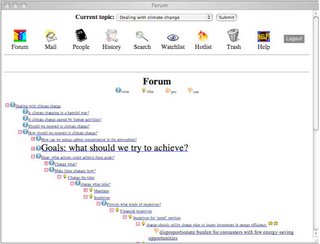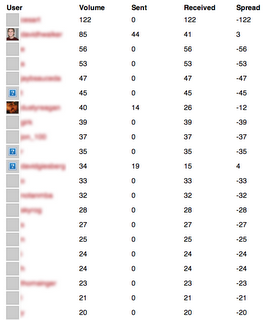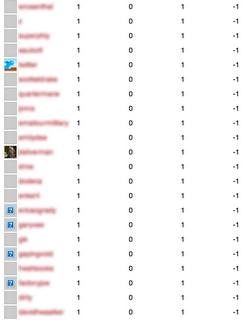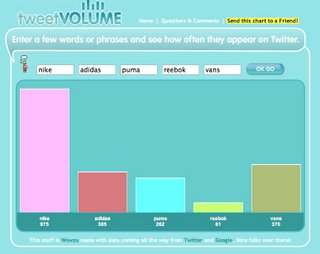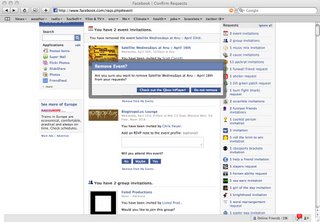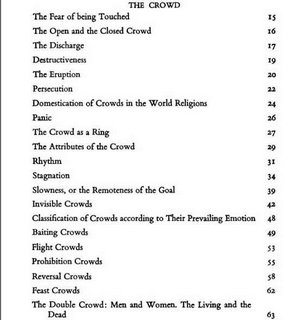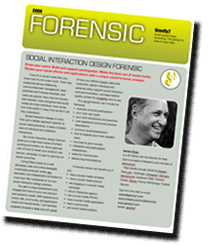I sincerely believe that social media analysis needs to account not only for the user's proximate activities, those being his or her online behavior and actions as trackable by analytical tools (be they within a walled garden social network, on and around blogs, in conversation tools like twitter, or even through social applications and widgets), but also deeper and less available interests. These are the interests that underlie interpersonal interactions, communication, and relationships. And no matter how near or far interactions, communication, or relationships may appear through social media applications, they form the basis of user agency.
Agency is a sociological concept, and it underlies user actions and activities. Agency, to me, involves intentionality and motive, as well as content (information), and is interested (identifies or attaches to an object or subject). User experience is about agency. Interaction design is about agency. And inaction can be about agency, too. Fundamental to the concept of agency is that of self-reflexivity -- that we know what we are doing.
In social situations, activity and interaction are framed. That is, they unfold within a frame, which is to say that they make sense within context, and over a stretch of time. And in social interaction, the frame is often mutually constructed -- two or more people know what they are doing and if asked, would describe the situation they are in with a high level of agreement. Their recognition of the frame would agree even if they are in disagreement with one another.
This contextuality of action, I think, applies to mediated interactions as it does to face to face encounters. The difference is real, but is understood. Some interesting misinterpretations of intent, motive, interest, and so on of course occur online, and indeed can enrich the experience with a touch of play, self-reference, and so on. But as is the case of the comedian who tells a joke about a pope in an airplane telling a story about an ace fighter pilot.... frames can be layered and embedded within one another, and we come out the other end for the most part still making sense.
I bring all of this up because it informs how we read and interpret, and thus also design, anticipate, and model, social media user experiences and social practices. Users provide more than just information and at the same time are less than informing. Our models need to interpret, for example, whether a user has recommended a movie to somebody, in front of a community, to be shared among friends, because she enjoys writing reviews, has a reputable movie blog, is considered (or believes herself to be considered) a movie expert, or believes in the principle of contributing reviews to the common good.
Would we get this from the review itself? Not likely. From envelope information (to whom it's addressed, how messaged, where posted, how delivered)? From comments and their agreement/disagreement? From past movies reviewed? From movie categories covered (e.g. new releases vs film noir). I belabor the point -- it's complex (though do-able). In all cases, however, agency is neither explicit nor stated. ("I hereby submit this movie review to this esteemed blog for the sake of my reputation as a budding film noir critic and blogging habitue".)...
Designing social media to engage users is much simpler than accurately interpreting their actions, for design succeeds as long as users are compelled by their own experience. Users will remain engaged even if the experience is riddled with theft, robbery, and deception. To wit, Vegas. Social interaction designers don't need to know what compels a user, as long as they understand that there is a range of users, and that their system facilitates communication and interaction, as well as an experience of presence which varies user by user, and which leads to social practices in the aggregate. Users work with what is given, on the screen and architecturally, as well as with those others who are present, and participating. Online interactions don't have to be efficient, or even effective, to be rewarding.
But like the anthropologist studying a culture from the outside, or an archaelogist interpreting the meanings of cultural artifacts and found objects, analytical software, as a non-participant, is confronted with a more profound challenge: reverse engineering the artifacts, button presses, posts, comments, ratings, bookmarks and so on left behind by users whose mindfulness or mindlessness would be impossible to measure, and at times difficult to distinguish.
Information about what users do is not available in the information about what users have done.
This is where I tack differently from models based more squarely in data analysis and user activity tacking and measurement. Those methods, and I'm not a qualified statistician, may observe the disaggregated and yet predict in the aggregate, and successfully so, if we are to place any faith whatsoever in the long tail. Metrics may serve purposes of campaign analysis and even management. But engagement (social media marketing) tools would require a communicable messaging and engagement platform. The difference? Agency. Communicable engagement seeks not the acceptance of the user but his or her participation -- it anticipates the significance of agency.
I so strongly believe that social analytics ought to be rooted in an intersubjective framework of action, and not one of information gathering alone, that I'll close with a few quotes from Erving Goffman, master observer of social interactions and mentor in spirit:
"Given a speaker's need to know whether his message has been received, and if so, whether or not it has been passably understood, and given a recipient's need to show that he has received the message and correctly—given these very fundamental requirements of talk as a communication system—we have the essential rationale for the very existence of adjacency pairs, that is, for the organization of talk into two-part exchanges. We have an understanding of why any next utterance after a question is examined for how it might be an answer." Erving Goffman, Forms of Talk, P. 12
"Note that insofar as participants in an encounter morally commit themselves to keeping conversational channels open and in good working order, whatever binds by virtue of system constraints will bind also by virtue of ritual ones. The satisfaction of ritual constraints safeguards not only feelings but communication, too." Erving Goffman, Forms of Talk, p. 18
"And just as system constraints will always condition how talk is managed, so, too, will ritual ones. Observe that unlike grammatical constraints, system and ritual ones open up the possibility of corrective action as part of these very constraints. Grammars do not have rules for managing what happens when rules are broken." Erving Goffman, Forms of Talk, 21
"Uttered words have utterers; utterances, however, have subjects (implied or explicit), and although these may designate the utterer, there is nothing in the syntax of utterances to require this coincidence." Erving Goffman, Forms of Talk 3
"The rules of conduct which bind the actor and the recipient together are the bindings of society. But many of the acts which are guided by these rules occur infrequently or take a long time for their consummation. Opportunities to affirm the moral order and the society could therefore be rare. It is here that ceremonial rules play their social function, for many of the acts which are guided by these rules last but a brief moment, involve no substantive outlay, and can be performed in every social interaction. Whatever the activity and however profanely instrumental, it can afford many opportunities for minor ceremonies as long as other persons are present. Through these observances, guided by ceremonial obligations and expectations, a constant flow of indulgences is spread through society, with others who are present constantly reminding the individual that he must keep himself together as a well demeaned person and affirm the sacred quality of these others. The gestures which we sometimes call empty are perhaps in fact the fullest things of all." Erving Goffman, Interaction Ritual, 91
To put this simply, if it were Prime Suspect (or my favorite, Cracker), vs CSI -- I'd pick Prime Suspect.
Labels: psychology, social analytics, social interaction design, social marketing, social media

